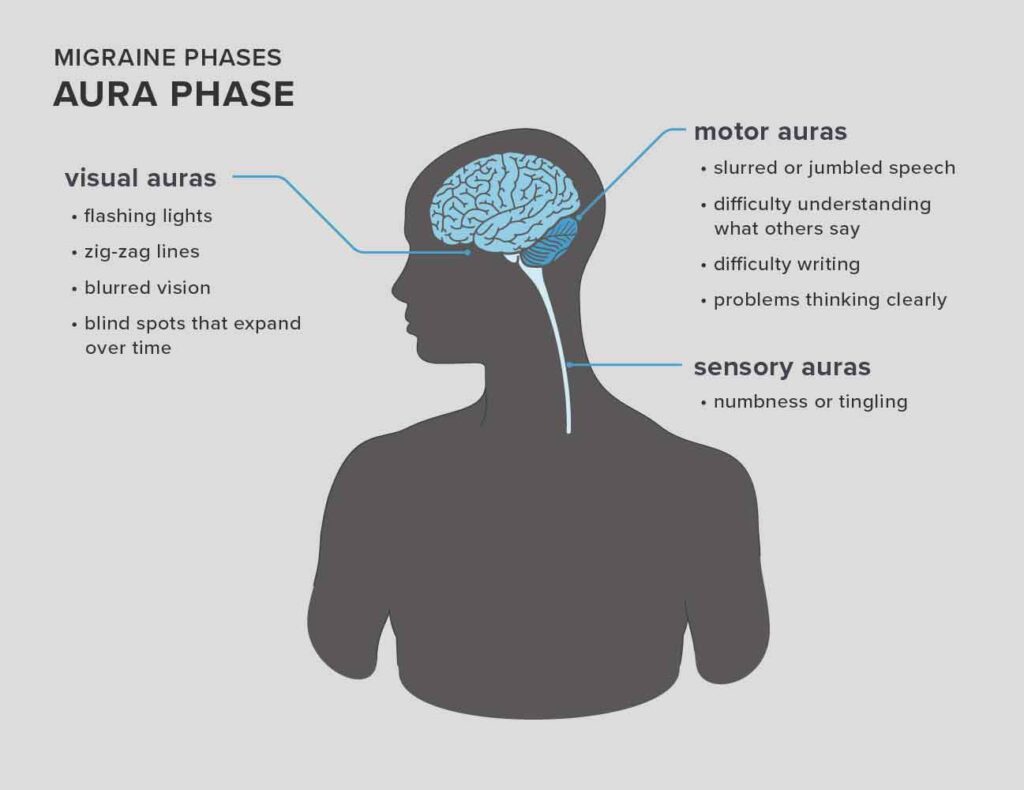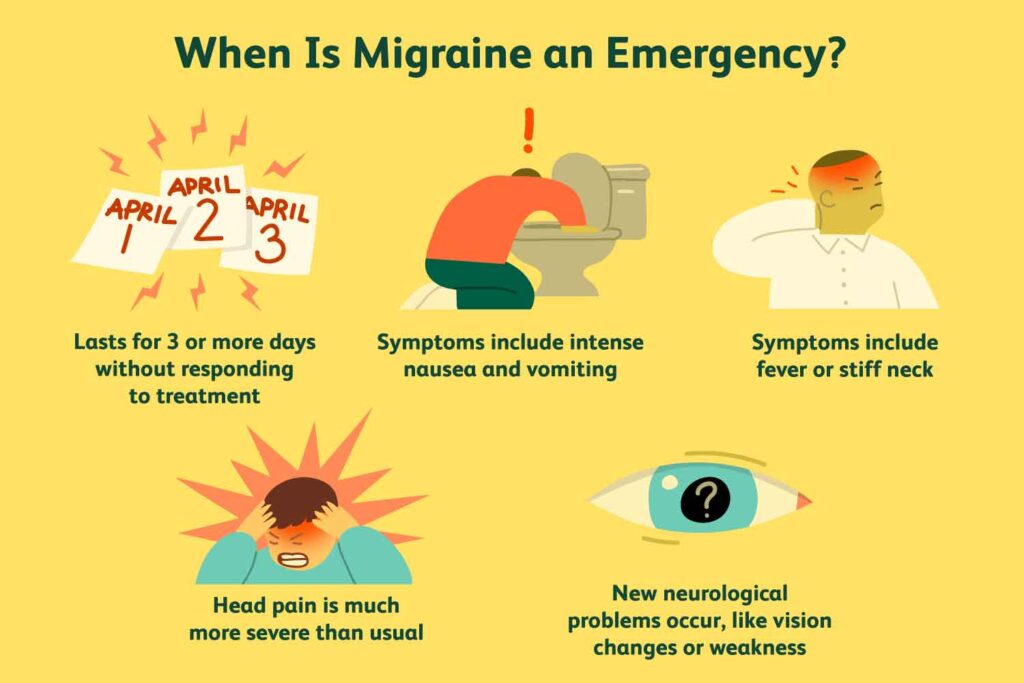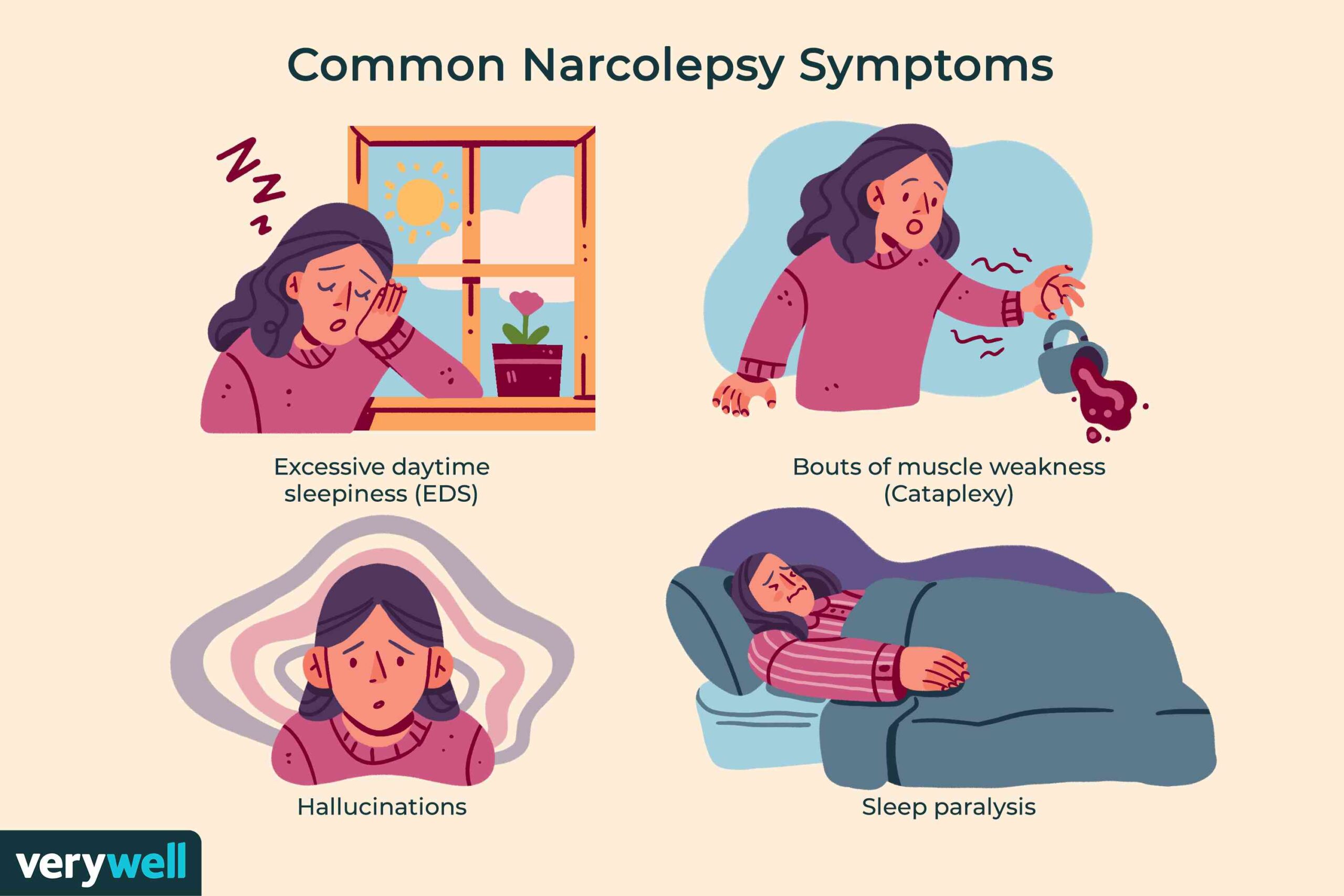Migraine With Aura Treatment-various aspects-
The symptoms of migraine with aura can be alleviated with a combination of lifestyle modifications, complementary therapies, and acute and preventative drugs. Acute treatments concentrate on alleviating symptoms during an episode, while preventative therapies seek to lessen the frequency and intensity of attacks.


Emergency Care (During an Attack):
Pain Killers:
For minor to moderate discomfort, over-the-counter treatments such as ibuprofen, aspirin, or acetaminophen are available.
Triptans
Drugs like sumatriptan or rizatriptan are able to successfully block pain pathways.
Dihydroergotamine:
At the start of a migraine, you may use a nasal spray or injection.
CGRP Antagonists:
Recent medications that target the calcitonin gene-related peptide (CGRP) pathway.
Drugs for Nausea:
Medications like metoclopramide can be helpful if nausea and vomiting are present.
Lasmiditan:
A novel medicine that is effective in treating severe migraine episodes.
Opiates:
Though it might be taken into consideration in extreme cases, it should be used with caution because it might cause dependency.
Non-invasive neuromodulation tools:
Maybe a choice for people who are unable to tolerate or do not respond to medication.
If Any Patient of ENT Requires Any Surgery, Opd Consultation Or Online Consultation In Clinic of ENT Specialist Doctor Dr. Sagar Rajkuwar ,He May Contact Him At The Following Address-
Prabha ENT Clinic, Plot no 345,Saigram Colony, Opposite Indoline Furniture Ambad Link Road ,Ambad ,1 km From Pathardi Phata Nashik ,422010 ,Maharashtra, India-Dr. Sagar Rajkuwar (MS-ENT), Cell No- 7387590194, 9892596635
Preventative care:
Medicines:
- Antidepressants: Tricyclic antidepressants, such amitriptyline, can aid in the prevention of migraines.
- Medication for blood pressure: Calcium channel blockers and beta-blockers are two examples of drugs that may be helpful.
- Anti-Seizure Medications: Some drugs, such topiramate, can help lower the frequency of migraines.
- CGRP Monoclonal Antibodies: These injectable drugs block the CGRP route.
Changes to Lifestyle:
- Recognize and Prevent Triggers: A headache diary can assist in identifying triggers, such as particular meals, stress, or sleeplessness.
- Consistent Sleep Schedule: It’s crucial to establish a regular sleep pattern.
- Regular Exercise: Regular physical activity can help lessen the incidence of migraines.
- Stress Management: Methods such as yoga, meditation, or deep breathing can be beneficial.
Therapies that complement one another include:
- Magnesium: Can help alleviate pain and aura.
- Injections of Botox can be used to treat chronic migraines.
- Cognitive Behavioral Therapy: May improve coping abilities and aid in pain management.
- Nerve stimulation: It may be a viable option for those who do not react to other therapies.
Significant Factors to Consider:
Early treatment:
Beginning acute treatments at the first indication of a headache or aura is usually more effective.
Personalized Therapy:
Treatment plans should be customized to each person’s unique triggers, symptoms, and reactions to treatment.
Speak with a Healthcare Expert:
To determine the most effective course of treatment for your particular case, it’s crucial to speak with a physician or headache specialist.
Excessive Use of Medications Causes Headaches:
Be careful with over-the-counter pain killers because excessive use might cause medication-overuse headaches.
For Update On Further Important Health Related Topics And Frequently Asked Questions On Health Topics By General Population Please Click On The Link Given Below To Join Our WhatsApp Group –
https://chat.whatsapp.com/Lv3NbcguOBS5ow6X9DpMMA
Treatment
Similar to migraine alone, treatment for migraine with aura is focused on alleviating migraine pain.


Remedies for relief
The most effective time to take migraine pain medications is at the first indication of an impending migraine-as soon as the symptoms and indicators of a migraine aura start to appear. The different types of medications used to treat migraine pain are determined by its severity.
- Pain relievers. Aspirin or ibuprofen (Advil, Motrin IB, et al.) are examples of these over-the-counter or prescription pain relievers. If used too frequently, these could lead to headaches from medication overuse, and maybe ulcers and bleeding in the gastrointestinal tract.
Caffeine, aspirin, and acetaminophen are combined in some migraine relief medicines (Excedrin Migraine), which may be effective for moderate migraine pain.
- Triptans. Because they block pain pathways in the brain, prescription medications like sumatriptan (Imitrex, Tosymra) and rizatriptan (Maxalt, Maxalt-MLT) are used to treat migraine. They can alleviate a lot of migraine symptoms when taken as pills, shots, or nasal sprays. They may not be safe for those who are at risk of having a stroke or heart attack.
- Dihydroergotamine (D.H.E. 45, Migranal) This medication, which is available as an injection or nasal spray, works best for migraines that last longer than 24 hours when administered soon after the onset of symptoms. The aggravation of migraine-related vomiting and nausea are possible side effects.
Avoid dihydroergotamine if you have kidney or liver disease, high blood pressure, or coronary artery disease.
- Reyvow (Lasmiditan). This newer oral pill is permitted to be used to treat migraines, whether or not they are accompanied by an aura. In drug trials, lasmiditan reduced headache discomfort by a significant amount. People who use lasmiditan should avoid driving or using machinery for at least eight hours because it might induce drowsiness and dizziness.
- Calcitonin gene-related peptide (CGRP) antagonists. Oral CGRP antagonists ubrogepant (Ubrelvy) and rimegepant (Nurtec ODT) were recently approved for the treatment of acute migraine in adults with or without aura. In clinical trials, medications from this class were more effective than placebo in reducing pain and other migraine symptoms, such as nausea and light and sound sensitivity, two hours after taking it.
Excessive drowsiness, nausea, and dry mouth are typical adverse effects. Strong CYP3A4 inhibitors should not be used with rimegepant or ubrogepant.
- Opioid medicines. Narcotic opioid drugs may be beneficial for those who are unable to use other migraine treatments. These are often utilized only if other treatments are ineffective since they can be quite addictive.
- Medication that reduces nausea. If your migraine with aura is accompanied by nausea and vomiting, these can be helpful. Chlorpromazine, metoclopramide (Reglan), and prochlorperazine (Compro) are examples of anti-nausea drugs. These are often administered in conjunction with pain relievers.
Some of these drugs are not safe to use during pregnancy. Do not use any of these drugs if you are pregnant or attempting to become pregnant without first consulting your healthcare provider.
The Diagnosis
Based on your symptoms and indicators, medical and family history, and a physical assessment, your doctor may be able to identify a migraine with aura.
To rule out more-serious illnesses like a transient ischemic attack (TIA), your doctor may advise specific tests if you don’t have a headache after your aura.
Among the assessments are:
- An examination of the eyes. An eye specialist (ophthalmologist) should conduct a thorough eye examination to rule out any eye issues that may be producing visual symptoms.
- Head computed tomography (CT) scan. Your brain is shown in great detail using this X-ray method.
- Magnetic resonance imaging (MRI). This diagnostic imaging method generates images of your inside organs, such as your brain.


To rule out any brain illnesses that might be the cause of your symptoms, your doctor may recommend that you see a neurologist, a specialist in disorders of the nervous system.
Preventive drugs
Regular migraines, whether accompanied by an aura or not, can be helped by drugs. If your headaches are recurrent, persistent, or severe and don’t respond well to therapy, your doctor may suggest preventative medicines.
The goal of preventative medicine is to lessen the frequency, severity, and duration of migraine headaches, whether or not accompanied by an aura. Among the options are:
- Drugs that reduce blood pressure. Metoprolol tartrate (Lopressor) and propranolol (Inderal, InnoPran XL, among others) are examples of beta blockers. Calcium channel blockers like verapamil (Verelan) can help prevent migraines with aura.
- Antidepressants. Migraines can be prevented with a tricyclic antidepressant called amitriptyline. Other antidepressants may be prescribed in its place due to amitriptyline’s adverse effects, such as drowsiness.
- Medications for seizures. In the event that your migraines occur less often, valproate and topiramate (Topamax, Qudexy XR, and others) may be helpful, but they can have side effects like weight changes, nausea, dizziness, and more. These drugs are not advised for women who are pregnant or attempting to conceive.
- Botox shots. About every 12 weeks, some adults get injections of onabotulinumtoxinA (Botox) to help prevent migraines.
- Monoclonal antibodies against CGRP. The Food and Drug Administration has authorized the use of newer medications such as erenumab-aooe (Aimovig), fremanezumab-vfrm (Ajovy), galcanezumab-gnlm (Emgality), and eptinezumab-jjmr (Vyepti) in the treatment of migraines. Monthly or quarterly, they are administered via injection. The most frequent adverse effect is a response at the injection site.
Find out if these drugs are suitable for you by speaking with your doctor. Not all of these medications are safe to use during pregnancy. Before using any of these drugs if you’re pregnant or attempting to become pregnant, see your doctor.
FOR INFORMATION IN GREAT DETAIL ON Migraine Associated Vertigo PL CLICK ON THE LINK GIVEN BELOW-It is always better to view links from laptop/desktop rather than mobile phone as they may not be seen from mobile phone. ,in case of technical difficulties you need to copy paste this link in google search. In case if you are viewing this blog from mobile phone you need to click on the three dots on the right upper corner of your mobile screen and ENABLE DESKTOP VERSION.
FOR INFORMATION IN GREAT DETAIL ON Headache and Vertigo for Days PL CLICK ON THE LINK GIVEN BELOW-It is always better to view links from laptop/desktop rather than mobile phone as they may not be seen from mobile phone. ,in case of technical difficulties you need to copy paste this link in google search. In case if you are viewing this blog from mobile phone you need to click on the three dots on the right upper corner of your mobile screen and ENABLE DESKTOP VERSION.
FOR INFORMATION IN GREAT DETAIL ON How To Get Rid Of Dizziness From Migraine PL CLICK ON THE LINK GIVEN BELOW-It is always better to view links from laptop/desktop rather than mobile phone as they may not be seen from mobile phone. ,in case of technical difficulties you need to copy paste this link in google search. In case if you are viewing this blog from mobile phone you need to click on the three dots on the right upper corner of your mobile screen and ENABLE DESKTOP VERSION.
Issued In Public Interest By –



